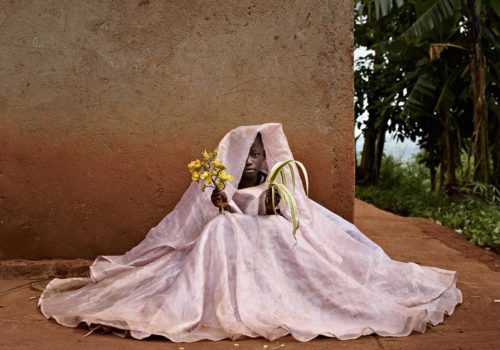The Yossi Milo Gallery in New York is hosting an exhibition of 1994, the latest series by the South-African photographer Pieter Hugo. Evoking the Rwandan genocide as well as the collapse of the Apartheid, the series is exceptionally well balanced. The artist’s detached poetic gaze highlights a generation of children and teenagers caught up between the unknown pain of the past and questions about the future.
His studies of traveling performers in Nigeria (The Hyena & Other Men, 2005–2007), the ups and downs of the Nigerian cinema industry (Nollywood, 2009), or the descent into the smoky hell of a Ghana landfill (Permanent Error, 2001) clearly show his desire to directly confront the socioeconomic problems affecting Africa. At the very least, his photography records the ebb and flow of lives struggling to survive in a political environment. Pieter Hugo’s work raises some compelling questions: is it quietly militant? Doesn’t our interpretation depend on our knowing the context, the story, and History? In a word, how do we step outside what we know in order to take a fresh look at Hugo’s photography?
At first sight, 1994 doesn’t make our task any easier. The choice of the subject is equivocal: children and adolescents born after 1994 and living with the memories of traumatic events without having experienced them. This is a “post” generation, called upon to remember, in the hope of renewal. The viewer will understand this at a glance. These children are bearers of a history that eludes their grasp. There is a hint of ambivalence in the naïve gazes peering through the tall grasses of Rwandan hills: perhaps these are the same eyes that saw the massacres. This implies drawing a parallel: nature, goodness, and innocence facing an uncertain future. As the photographer has himself acknowledged, these photographs exhibit a desire to focus on a generation preoccupied with issues that are no less important than those of the past.
And yet each image also sounds a reassuring note. Apart from any sociological interpretation, the series strikes a chord. The harmonious colors, contrasting pastels, as well as the framing and the photographer’s position reveal a detached, yet affectionate gaze. The anxiety subsides, the attachment remains. Is this the gaze of a photographer who became a father? Is this an overly emotional interpretation? Or is there just something very moving about this harmonious composition? Who knows? The color is certainly key. The earthy browns and beige balance each other out (Portrait #7 and Portrait #12); the natural greens are tinted with fuchsia pink (Portrait #3 and Portrait #9); the yellow and white palette sparkles like starlit mother of pearl (Portrait #14, Portrait #16, and Portait #18). The series is a successful union of shades and hues!
All the portraits bathe in soft light: natural sunlight brings to mind the lyricism of Terrence Malick’s work. This parallel deserves further consideration. Whether still or moving, the images of these two artists opt for sober narration: the images speak, emotions prevail. Feeling comes first, understanding second. Both the South-African photographer and the American filmmaker prefer subtlety and gentleness in order to question History and Humans.
Arthur Dayras
Arthur Dayras is a writer specializing in photography; he lives and works in New York.
Pieter Hugo, 1994
From January 26 through March 11, 2017
Yossi Milo Gallery
245 10th Avenue
New York, NY 10001
















